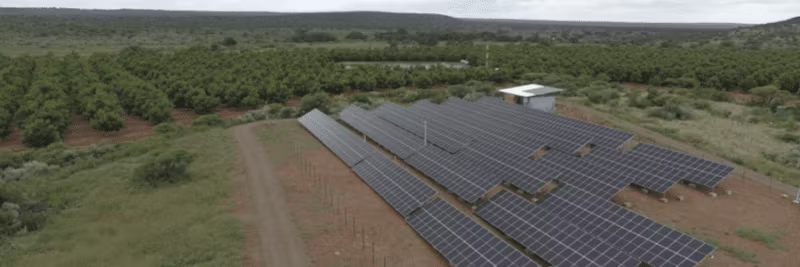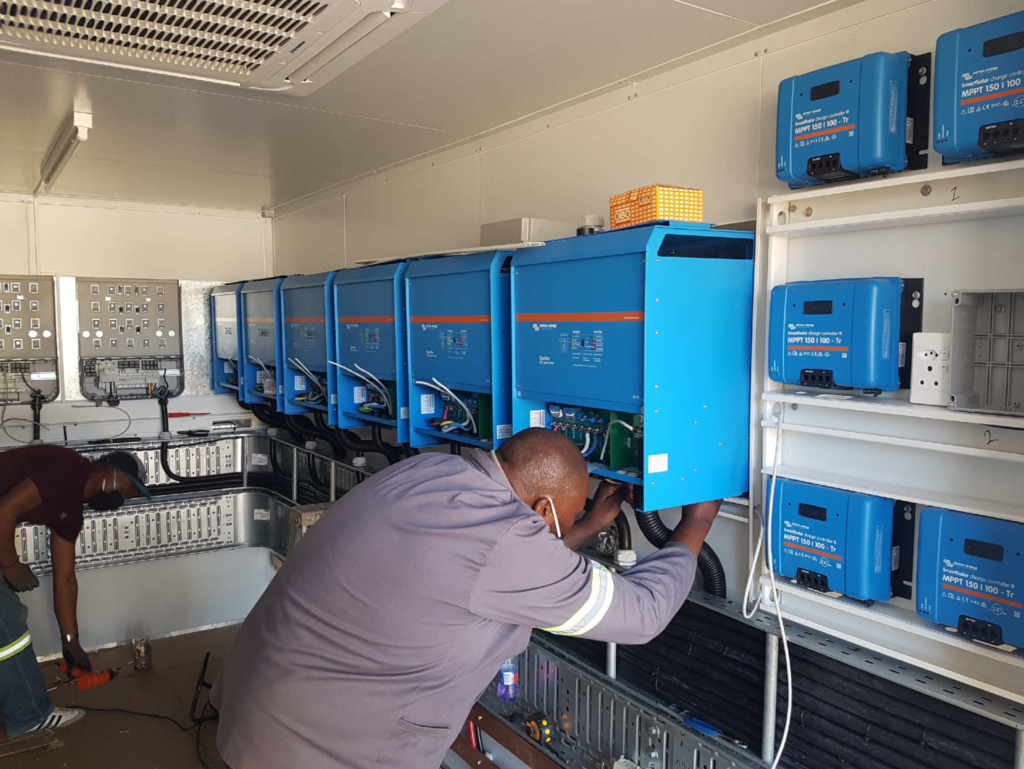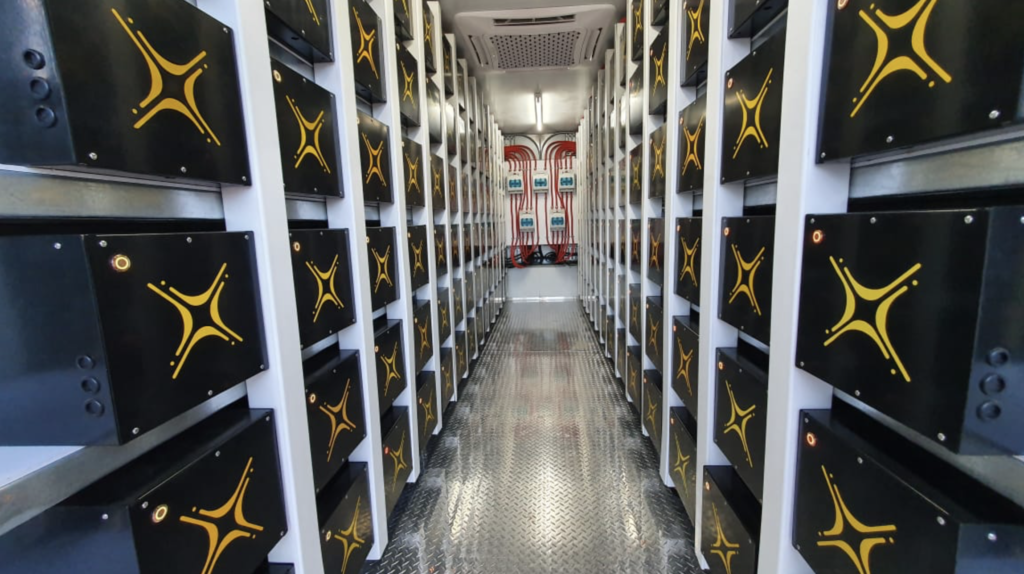Warenkorb
Rabatt: 0.00 EUR
Rabatt: 0.00 EUR
Justin, Victron Energy |29/03, 2021

Eine 180 Hektar große Pekannussplantage in Hartswater, Südafrika, hat ihr Bewässerungsproblem über Nacht gelöst, indem sie die größte netzunabhängige Niederspannungs-Solaranlage der Region installiert hat.
Das Problem war nicht der Zugang zu Wasser – 1200 km Kanäle aus dem Vaalharts-Bewässerungssystem liefern das benötigte Wasser. Die Herausforderung lag im instabilen Stromnetz mit wiederkehrenden Stromausfällen und Überlastungen. Bei Stromausfall gehen Wasserlieferungen verloren, was zu finanziellen Verlusten und dem Risiko von Ernteschäden führt.
Hartswater Pecan Plant investierte mit Hilfe von Ecotrades Solar Power Systems in eine private Energieversorgung. Die Lösung besteht aus zwei separaten Infrastrukturen, um Spannungsabfälle im 4,5 km langen Kabelnetz zu vermeiden.

Das System wurde in vier isolierten, klimatisierten Containern – zwei für Batteriebänke und zwei für Wechselrichter – vor dem Transport zum Standort mit Ecotrades eigenen Kranwagen vorinstalliert.
Die Installation umfasst 336 Batterien, die für eine korrekte Balance identische Kabellängen erfordern. Die Lösung war eine ergonomische Batterieanordnung mit robusten Busbars (100 mm breit, 10 mm dick).


Das System wird über Victron Remote Management (VRM) überwacht, was eine Echtzeitanalyse von Energieflüssen und historischen Daten zur Optimierung ermöglicht.
Die neue Solaranlage eliminiert die Abhängigkeit von einem instabilen Stromnetz, sichert den Bewässerungsplan und maximiert die Ernte. Die Investition soll weitere Landwirte in der Region dazu inspirieren, eine nachhaltige, private Energieversorgung zu wählen.